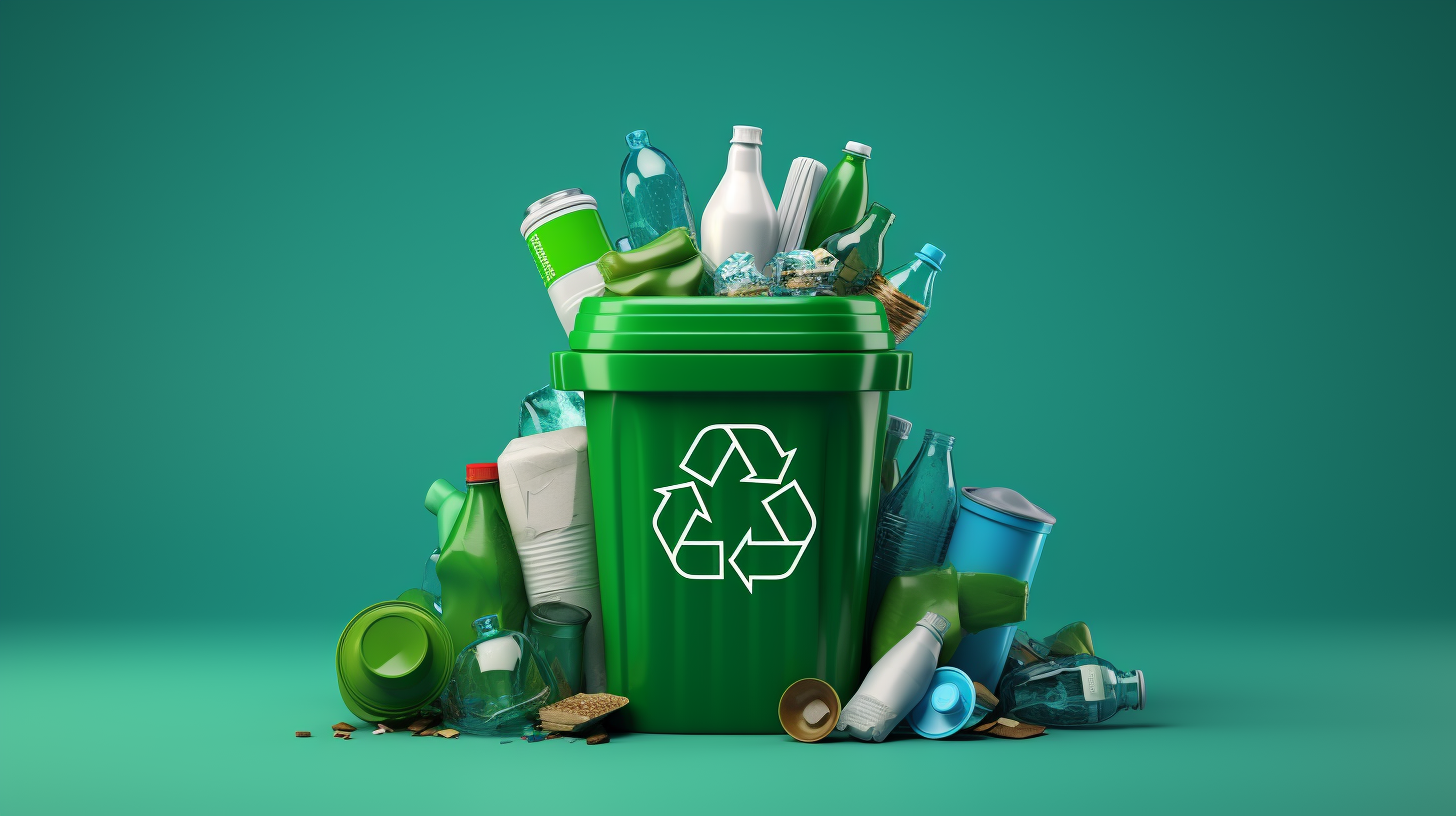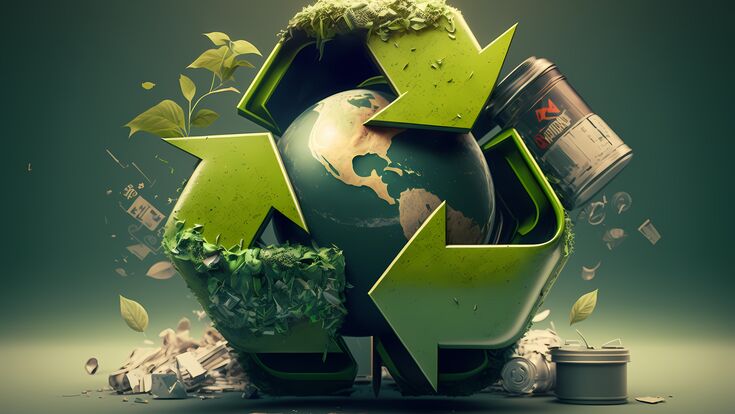Exactly How Recycling Lives Services Make a Difference in Sustainable Waste Administration
Exactly How Recycling Lives Services Make a Difference in Sustainable Waste Administration
Blog Article
Comprehending the Classification and Handling of Different Kinds Of Waste
Efficient waste administration is pivotal for environmental sustainability, calling for a comprehensive understanding of the classification and handling of different waste types. Household waste, industrial spin-offs, dangerous materials, digital refuse, and organic remnants each necessitate distinctive protocols to ensure safety and reduce environmental damages.

Household Waste
Household waste, encompassing a wide selection of discarded products generated from daily living activities, stands for a substantial part of the total waste stream - recycling lives services. This group includes natural waste such as food scraps, backyard trimmings, and paper products, together with inorganic products like plastics, metals, and glass. The varied nature of home waste necessitates reliable classification and monitoring to alleviate ecological impact and advertise sustainable living techniques
Effective house waste management starts with segregation at the resource, facilitating recycling, composting, and secure disposal. Organic waste, as an example, can be composted to produce nutrient-rich dirt changes, decreasing landfill concern and improving dirt wellness. Recyclable materials, including paper, glass, and certain plastics, can be processed and repurposed, minimizing and conserving resources power intake related to brand-new material production.
In addition, harmful home waste such as batteries, digital devices, and cleansing chemicals calls for specialized handling to stop soil and water contamination. Public recognition campaigns and hassle-free disposal alternatives play crucial duties in making sure proper disposal and recycling of these products. By executing durable waste reduction approaches and cultivating community engagement, districts can considerably ease the environmental impact of house waste.
Industrial Waste
Hazardous waste, a major contributor to worldwide waste generation, incorporates a varied variety of materials generated by production, construction, and other industrial tasks. This classification consists of spin-offs such as scrap steel, plastics, rubber, chemicals, and various other residues. The make-up and quantity of industrial waste can differ significantly relying on the industry and production procedures entailed. Reliable monitoring of industrial waste is crucial for minimizing environmental impact and promoting sustainable practices.
The handling of commercial waste commonly involves a number of processes: collection, segregation, disposal, and therapy. Collection systems are developed to successfully collect waste products from numerous sources within an industrial procedure.
Embracing methods such as waste minimization, source healing, and recycling can dramatically decrease the problem of hazardous waste on the atmosphere, adding to more lasting commercial methods.
Contaminated Materials

The classification of harmful waste is typically based upon its physical and chemical characteristics. Toxic wastes contain harmful substances that can cause adverse wellness impacts also at low focus. Destructive wastes can damage or destroy living materials and tissues. Combustible wastes can easily stir up, posturing fire dangers, while responsive wastes can cause explosions or launch poisonous gases upon contact with various other compounds.
Efficient contaminated materials administration entails several essential methods: recognition and partition of hazardous materials, risk-free transport and storage, and ideal treatment and disposal. Therapy techniques might include chemical stabilization, incineration, and neutralization. Regulative compliance is essential, directed by structures such as the Source Preservation and Recuperation Act (RCRA) in the USA, which makes certain eco audio and secure administration of dangerous waste.
Electronic Waste
Digital waste, frequently abbreviated as e-waste, stands for a growing obstacle in waste monitoring because of the quick obsolescence of modern technology. This group incorporates a broad variety of disposed of electronic tools, consisting of mobile phones, computer systems, tvs, and family home appliances. The complexity of e-waste hinges on its make-up; these products include a mixture of valuable materials such as gold and copper, as well as harmful substances like lead, mercury, and cadmium.

Regulation and guidelines, such as the European Union's Waste Digital and electrical Tools (WEEE) Regulation, objective to advertise accountable e-waste monitoring. These policies mandate makers to promote the collection and recycling of electronic items, therefore minimizing the concern on landfills and reducing ecological contamination.
Organic Waste
Organic waste, encompassing biodegradable materials such as food scraps, lawn trimmings, and farming deposits, comprises a significant part of the metropolitan strong waste stream. This kind of waste is significant not just for its quantity but also for its potential environmental effect otherwise managed properly. Organic waste can break down anaerobically in garbage dumps, producing methane, a potent greenhouse gas adding to environment adjustment.
Appropriate handling of organic waste involves several strategies. In addition, diverting food waste from land fills with donation programs can minimize food insecurity while minimizing waste.
Municipalities and services are significantly recognizing the value of natural waste monitoring. Implementing comprehensive organic waste recycling programs not just reduces ecological effects but also straightens with more comprehensive sustainability goals, promoting a circular economy her latest blog where resources are continually reused and repurposed.
Final Thought
Effective waste monitoring and environmental defense necessitate a comprehensive understanding of the category and handling of different waste kinds. Executing ideal approaches for each waste kind ensures risk-free and accountable waste monitoring practices, ultimately adding to the protection of communities and public health and wellness.
Efficient waste administration is crucial for environmental sustainability, requiring a detailed understanding of the category and handling of numerous waste kinds.Household waste, including a wide array of discarded products produced from everyday living activities, represents a substantial element of the general waste stream.Industrial waste, a significant factor to international waste generation, includes a varied array of products generated by manufacturing, building and construction, and various other commercial activities (recycling lives services).Dangerous waste, an essential problem in waste monitoring, consists of materials that posture substantial threats to human wellness and the atmosphere due to their harmful, harsh, flammable, or reactive homes.Organic waste, encompassing eco-friendly materials such as food scraps, yard trimmings, and farming residues, comprises a considerable section of the metropolitan solid waste stream
Report this page